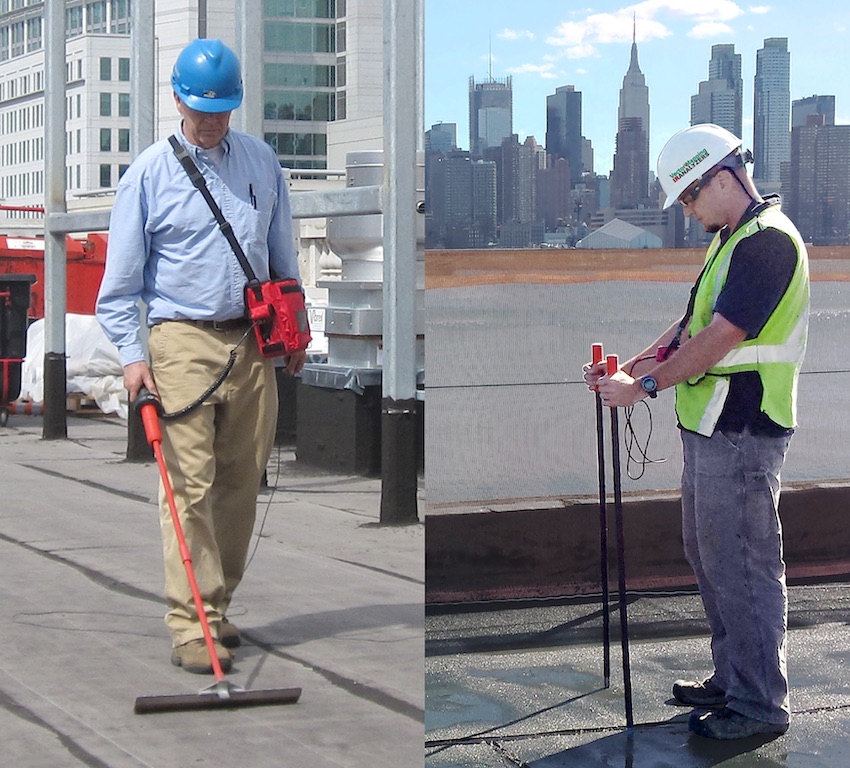Electronic Leak Detection—Four Steps to Maximize Results
![]() Continuing Education
Continuing Education
Use the following learning objectives to focus your study while reading this month’s Continuing Education article.
Learning Objectives - After reading this article, you will be able to:
- Identify the advantages and disadvantages of the three different types of Electronic Leak Detection (ELD) and describe how to choose the most effective survey technique(s) for your particular application.
- Ensure optimal ELD survey results by incorporating the best design and construction practices before your ELD survey team arrives.
- Vet and select an ELD service provider that will conduct a thorough and accurate test that meets the demands of the construction schedule and all project stakeholders.
- Discuss why it is not possible to find every leak, and why some assemblies are challenging or impossible to test.
Electronic Leak Detection (ELD) has become the gold standard for both integrity testing of newly installed membranes and forensic leak detection on older assemblies. While thousands of ELD tests have been successfully and accurately performed, not all tests will provide thorough and accurate information. In this webinar, we will explore the differences between different types of ELD and learn how to select the best test type for your particular situation. We will cover the proactive steps you should take to ensure the most accurate test, and discuss techniques for managing your customers’ expectations when assemblies are challenging or impossible to accurately survey. This course will be of great benefit to anyone who works in design, specification, consulting, construction, or purchase of roofing and waterproofing membranes.

Photo courtesy of IR Analyzers

|
Peter Brooks, Founder and President of IR Analyzers, Inc., has been involved in consulting, construction and testing of residential, commercial and industrial facilities since 1967. In 1984, Peter became one of the first Certified Thermographers and founded IR Analyzers to provide a full range of nondestructive testing and analysis services throughout the United States. He has over 36 years’ experience in non-destructive testing. Peter’s company has worked closely with thousands of architects, engineers, consultants and contractors on projects for many Fortune 500 companies, and has provided Infrared, Nuclear, Capacitance and Electronic Leak Detection testing and analysis on facilities from nuclear power plants to the Empire State Building. He is a nationally recognized expert in the field of nondestructive testing, and has trained thermographers at the national level. He has authored many articles on the technical and practical aspects of Infrared Thermography and Electronic Leak Detection. Peter has delivered seminars and webinars detailing the applications of non-destructive testing to numerous firms, educational institutions and trade associations. He served as Region I Director of the International Institute of Building Enclosure Consultants - IIBEC, Inc. (formerly (RCI) from 2011 to 2015. |
